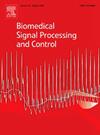Anomaly detection applied to the classification of cytology images
IF 4.9
2区 医学
Q1 ENGINEERING, BIOMEDICAL
引用次数: 0
Abstract
Cytology is a branch of pathology that diagnoses diseases and identifies tumours by looking at single cells, or small clusters of cells, using images observed under microscopes. Traditionally, pathologists manually analyse cytology images, a time-consuming and subjective task that could be significantly accelerated and improved through the application of computer vision and deep learning techniques. However, existing deep learning methods for cytology images need annotation at the cell level, a laborious and cumbersome process that requires the ability of pathologists with high experience. In this paper, we tackle this issue by using an anomaly detection approach that requires only annotation at the level of cytology images. Our approach splits cytology images into patches, and then uses an anomaly detection model to highlight anomalous cells. For the anomaly detection model, several reconstruction-based and embedding-based methods have been studied, the latter showing a better performance than the former. In particular, the best reconstruction-based method, based on a GAN model, achieved a perfect recall, a precision of 73.61%, and an AUROC of 69.8%; whereas, the best embedding-based method, being the PatchCore algorithm with a ResNet 50 backbone, obtained a perfect recall, a precision of 98.39%, and an AUROC of 99.98%. Finally, in order to facilitate the usage of our approach by pathologists, an ImageJ macro has been implemented. Thanks to this work, the analysis of cytology images and the diagnosis of associated diseases will be faster and more reliable.
求助全文
约1分钟内获得全文
求助全文
来源期刊

Biomedical Signal Processing and Control
工程技术-工程:生物医学
CiteScore
9.80
自引率
13.70%
发文量
822
审稿时长
4 months
期刊介绍:
Biomedical Signal Processing and Control aims to provide a cross-disciplinary international forum for the interchange of information on research in the measurement and analysis of signals and images in clinical medicine and the biological sciences. Emphasis is placed on contributions dealing with the practical, applications-led research on the use of methods and devices in clinical diagnosis, patient monitoring and management.
Biomedical Signal Processing and Control reflects the main areas in which these methods are being used and developed at the interface of both engineering and clinical science. The scope of the journal is defined to include relevant review papers, technical notes, short communications and letters. Tutorial papers and special issues will also be published.
 求助内容:
求助内容: 应助结果提醒方式:
应助结果提醒方式:


